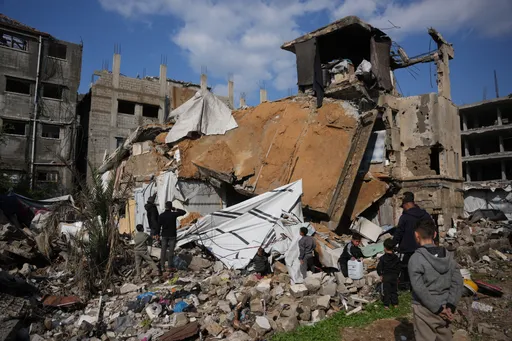The UN Intergovernmental Panel on Climate Change (IPCC) started the week with a dire forecast, a shortened timeline for a drastic plan to keep the rise in global warming capped at 1.5 degrees Celsius.
Avoiding global climate chaos will require a major transformation of society and the world economy that is "unprecedented in scale," the IPCC said on Monday in a landmark report that shows global warming impacts have come sooner and hit harder than predicted.
Armed with the knowledge that massive changes are needed before the clock runs out and the world becomes unlivable, poorer more vulnerable nations know they are also expected to shoulder the burden of preventing an end to life as most species know it now.
Those changes require a fall in manmade global net carbon dioxide (CO2) emissions by about 45 percent by 2030 from 2010 levels and reach "net zero" by mid-century.
As it stands, China is the world's number one greenhouse gas emitter and followed by the US, the European Union, India and Russia respectively. But in 2017, the US pulled out of the landmark 2015 Paris Agreement, which then assumed that 2 degrees Celsius was the guardrail for a climate-safe world.
An unequal burden
The earth's surface has warmed 1 degree Celsius (1.8 degrees Fahrenheit) since the mid-1800s; industrialisation spearheaded by the now prosperous UK, Europe and US increased emissions of carbon dioxide.
This has been enough to lift oceans and unleash a crescendo of heat waves, deadly storms, floods and droughts and the world is currently on track toward an unlivable 3 degrees Celsius or 4 degrees Celsius rise.
India, Pakistan, the Philippines and Bangladesh are the top four countries most vulnerable to climate change, an HSBC report said in March. Most of the vulnerable countries are in South and Southeast Asia and are among nations least well-equipped to respond to climate risks.
Weather-related disasters kill over 60,000 people every year, mainly in developing countries.
Climate change directly impacted health, agriculture, economy, trade, transportation and energy infrastructure in such nations.
Developing countries also suffer the worst effects on health as they have poor health care and infrastructure, the World Bank said. They often struggle with chronic or epidemic-level diseases such as malaria, dengue, malnutrition and diarrhoea.
Transformation of society at an 'unprecedented scale'
The IPCC report said a radical drawdown in energy consumption was needed, coupled with a rapid shift away from fossil fuels and a swift decline in CO2 emissions starting in 2020.
But for developing countries, low carbon sources are not at a stage where they become feasible alternatives to subsidised fossil fuels.
A contrasting "pay later" scenario suggested by the IPCC compensates for a high-consumption lifestyle and continued use of fossil fuels with a temporary breaching of the 1.5C ceiling.
It depends heavily on the use of biofuels. But the scheme would need to plant an area twice the size of India in biofuel crops, and assumes that some 1,200 billion tonnes of CO2 – 30 years' worth of emissions at current rates – can be safely locked away underground.
Money to save the planet
Limiting global warming to 1.5C comes with a hefty price tag: some $2.4 trillion (2.1 trillion euros) of investments in the global energy system every year between 2016 and 2035, or about 2.5 percent of world GDP.
The International Institute for Environment and Development (IIED) has said less developed countries would need $93 billion a year to meet their climate commitments. In a late 2015 report, the OXFAM International said the cost for developing countries to adapt to climate change could go as high as $500 billion a year by 2050.
Countries vulnerable to climate change often depend on income from the very sectors which they are supposed to subject to carbon cuts or sectors destroyed by weather events.
Or these countries suffer from struggling economies; Pakistan and Bangladesh are two of the most vulnerable nations but rank 172nd and 177th in the world in terms of GDP per capita respectively in 2017.
When President Donald Trump pulled the US, the second-biggest emitter, out of the agreement, he took with him a much-needed contribution tothe Climate Change Fund (CCF).
The absence of the US left stakeholders "concerned now how to mobilize the necessary financial support for many developing countries who do not have the capacity to address this climate change issues," Former UN secretary-general Ban Ki-moon said in July.
In an outlook meeting last year, the International Monetary Fund (IMF) called on developed countries to help climate-vulnerable developing countries improve infrastructure projects to cope with the impacts of climate change.
























